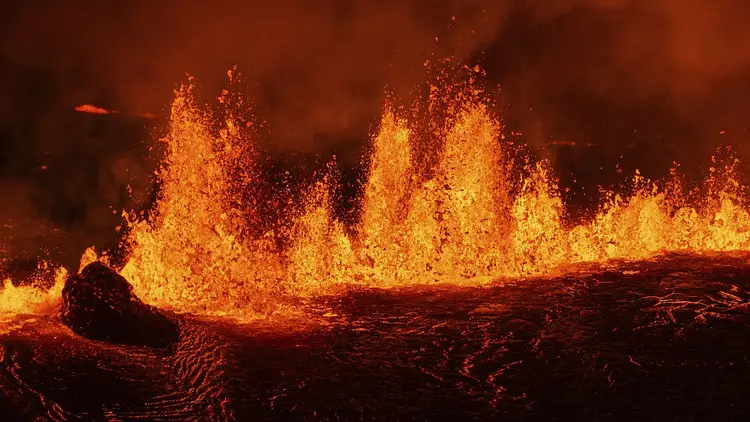Volcano in southwestern Iceland erupts for seventh time in a year

The volcano on the Reykjanes Peninsula had been inactive for about 800 years until it unexpectedly became active again in 2021.
A volcano in Iceland has erupted for the seventh time this year, releasing lava from a crack in the ground on the southwestern Reykjanes Peninsula.
The nation's weather agency responsible for tracking seismic events reported that the most recent eruption occurred late Wednesday night, resulting in a crack approximately three kilometers in length.
According to officials, the most recent eruption is significantly less intense than the one that occurred in August, suggesting that the eruption may have peaked.
Although the volcanic eruption does not endanger air travel, officials are cautioning about gas emissions affecting certain areas of the peninsula, particularly the nearby town of Grindavík.
The ongoing volcanic eruptions near Grindavík, a town with nearly 4,000 residents located around 50 kilometers southwest of Reykjavík, have caused harm to buildings and infrastructure. As a result, many locals have been required to leave their homes to ensure their safety.
Officials have stated that the recent eruption does not pose any additional risk to the town. However, it is still largely uninhabited due to evacuation orders that were given in December of the previous year.
Keflavík, Iceland's primary international airport, announced on its website that flights continued as usual and that there was no threat to essential infrastructure.
However, the Blue Lagoon geothermal spa, which is one of the top tourist spots in Iceland, has closed its doors and evacuated visitors. According to the Iceland Monitor news website, the entire parking area was buried under lava.
"We are closely monitoring the situation as it develops. This presents us with a fresh challenge that we need to tackle, and we must consider our future choices," stated Helga Árnadóttir, the manager of sales and operations for the lagoon.
Iceland is situated right along the boundary where the Eurasian and North American tectonic plates meet, making it a highly active area for earthquakes.
The volcano located on the Reykjanes Peninsula had been inactive for about 800 years until geological activity resumed in 2021.
Volcanic eruptions in the region have become increasingly common, with the most recent activity marking the sixth eruption this year.
Experts have cautioned that Reykjanes is expected to see multiple volcanic eruptions over the coming decades.



















































